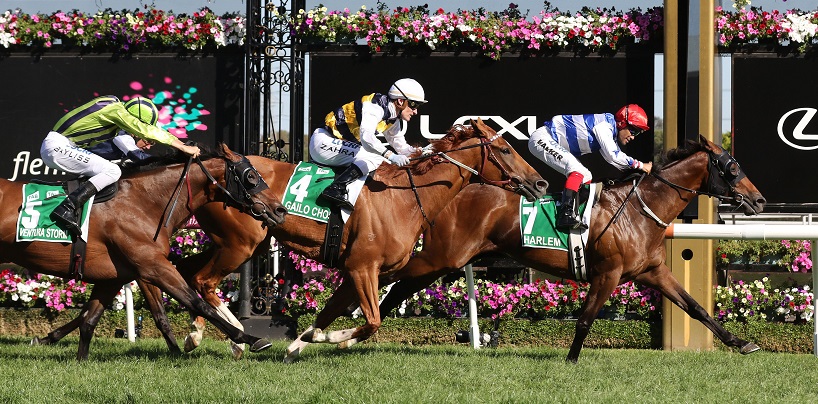The Australian Cup is held over 2000m at Flemington Racecourse in March each year. It is part of Flemington’s ‘Super Saturday’ meeting which also showcases the Newmarket Handicap over 1200m for the sprinters.
All horses except for maidens at time of entry are eligible for the Australian Cup which can hold a capacity field of 18 runners plus four emergencies. Up for grabs is $1.5 million in prize money with the winner taking home $900,000. The Group 1 pays down to eighth place with horses running between sixth and eighth receiving $30,000 each.
Since 1973, the Australian Cup has been run over 2000m but that wasn’t always the case with the race once being run over a longer distance than the Melbourne Cup. Originally it was 2.25 miles which is roughly 3621m. It has also had three other distances, each time reducing in distance, before arriving at the current 2000m. In addition to varying distances, the Australian Cup was originally a handicap between 1863-1978. It was then weight-for-age before returning to a handicap. Since 1987, the race has been a weight-for-age contest.
In 2007, Flemington underwent refurbishment work which forced Caulfield to host both the Australian Cup and Newmarket Handicap – Pompeii Ruler was the winner of the Cup that year.
Three-time Melbourne Cup-champion mare Makybe Diva holds the race record in a time of 1:58.73. Only a small field of seven runners contested the race but the great mare started $2.90 when defeating Winning Belle by a length. Elvstroem was the $2.05 favourite and Mummify also contested the race.

The Cups King, Bart Cummings, holds the record for most wins as a trainer with 13. It is one more victory than what he was able to achieve in the Melbourne Cup, which is also a record that should stand the test of time.
Jockey Tom Hales dominated the 1800s with eight wins in the Australian Cup. The first was in 1875 with Lurline and the last was Dreadnought in 1890.
The very first Australian Cup was run in 1863 when Barwon claimed the Principal Race. There have been three dead-heats in the race. Saladin and Flying Dutchman dead-heated in 1872. After a re-run, the pair once again dead heated. Finally, it would be Saladin who would emerge the victor. Saxonite and Prizefighter dead-heated in 1912 and Yootha and Cyron shared honours in 1969.
A great place to start when looking for some of the best racehorses is to read the honour roll of Australian Cup winners. It is a who’s who of thoroughbred racing. Some of the best horses to have captured the race include Malua (1886), Leilani (1975), Ming Dynasty (1978 and 1980), Dulcify (1979), Hyperno (1981), Bonecrusher (1987), Vo Rogue (1989-90), Better Loosen Up (1991), Let’s Elope (1992), Veandercross (1993), Saintly (1996), Octagonal (1997), Dane Ripper (1998), Northerly (2001 and 2003), Lonhro (2004) and Makybe Diva (2005).



